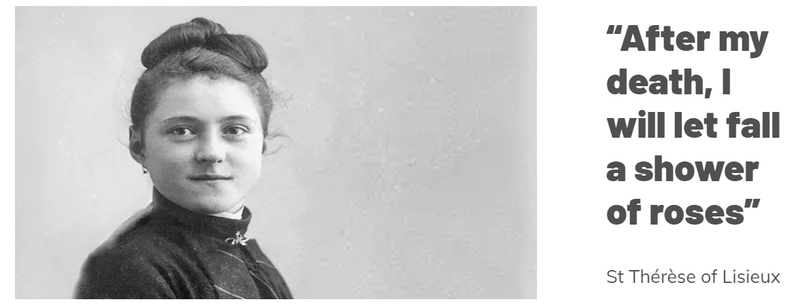Saints and Relics
For the first time in nearly 20 years, the relics of St Thérèse of Lisieux, one of the most popular saints of modern times, will visit Australia on a four-month pilgrimage along with the major relics of her parents, Saints Louis and Zélie Martin.

From February to May 2020, the family’s relics will travel across the country to 17 dioceses in city and rural areas, with major opportunities for communities in Sydney.
This will be a great opportunity for Catholic School students and staff to come together, and to find inspiration in the life of St Thérèse and her parents. For some Catholics, such ritual and tradition are important and meaningful ways to connect to the divine.
On 19 March, Our Lady Help of Christians Parish Rosemeadow will host the relics. See here for further information about the unique event:
https://www.olhcrosemeadow.org.au/Downloads/Bulletin.pdf
What follows are the words of the Most Reverend Gregory Homeming OCD, Bishop of Lismore about the relics.
“Many people wonder why the Church persists in what seems to be a mediaeval piety, an archaic practice. Why tour the remains of saints and make them available for the veneration of the faithful? Is this an outdated superstition?
Despite the scenes of intense religious devotion around relics, there is certainly nothing magical or talisman like about the relics of saints. Of themselves relics are not holy. It is more correct to say, they are the remains of a holy person, a saint, and on account of their connection to that holy person are revered.
In Australia we are used to caring for and respecting sacred sites. A place may be sacred for a number of reasons. It may be a place of spiritual significance to a people who identify with and are defined by that place; as is the case with many indigenous Australians. It may be a place where an important event took place and now is part of the national identity, such as Gallipoli. It may be a building in which over hundreds of years people have prayed and worshiped, such as a church or cathedral.
We all have souvenirs of people we have loved, insignificant items of little value, but to us they are treasured gems which move us to remember a loved one or an event. When the item attaches to a person it can bring to mind the attributes and goodness of the person. In some cases it can even encourage us to live according to higher values. The relics of saints fall into this category. Relics are physical remains which connect us with the goodness and holiness of the saint. They remind us of the saint and through the saint move us to live better lives.
The saints who are “visiting” Australia are a mother, a father and their daughter. St Louis and St Zelie are the only married couple to have been canonised, and they have a daughter who was called by Pope St Pius X, the greatest saint of the modern times. St Therese, who died in 1897, was a woman of precocious virtue and prayer. She says, “For me, prayer is a surge of the heart; it is a simple look turned toward heaven, it is a cry of recognition and of love, embracing both trial and joy.” She shows us that holiness is simple and hidden, it does not seek recognition but turning away from self to God, it makes within the human heart a place for Jesus.
As is the case with Jesus, holiness and goodness does not exist in a vacuum. It has a context. In Jesus’ case the context was the holy family. Extraordinary goodness does not exist in isolation. If you see a good child, you can generally presume that this goodness comes through the parents. Jesus was taught by Mary and St Joseph. St Therese is the daughter of holiness. The Church recognised that goodness is caught, and so investigated her parents, and found two saints.
These three saints show us the integrity of virtue and holiness. The path to holiness is the path of struggle and ordinary life. It is carried and lived with love, and dependence on God. They experienced the mercy of the Father and this mercy crafted the way they lived and loved. In this they are of great relevance for us. They have been where we are, and have together allowed God to perfect them. Being a family, the Martins prove that the family is the seed ground of holiness and goodness. We can learn from them.
Visit one of the churches which will host the relics. Pray and experience the saints. You will experience God and perhaps your life will change. As with a sacred site or souvenir, you can, through the saint, experience and connect with the holiness of God”.
Prayer in Memory of St Thérèse of Lisieux
Loving God, as we remember St Thérèse
and her holy family, teach us to live
each moment as missionary disciples in love and generosity.
May her little way lead us to discern your will
in loving surrender to what the Spirit is saying,
and may we know that with you
everything is grace.
Amen.
Louise East - Religious Studies Coordinator